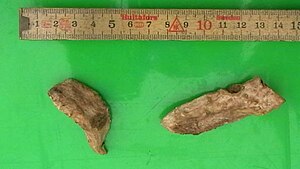[amazon_link asins=’B002DCFFJY,B002DCA076,B00KM04OXW’ template=’ProductCarousel’ store=’finmeacur-20′ marketplace=’US’ link_id=’10a52d18-3212-11e7-b141-6384f3daab93′]
Botanical Name : Iris germanica florentina
Family : Iridaceae
Subfamily: Iridoideae
Genus: Iris
Kingdom: Plantae
Order: Asparagales
Tribe: Irideae
Subgenus: Iris
Section: Iris
Species: I. germanica
Synonyms :Iris florentina – L.
Common Name :Orris, German Flag
Habitat :Iris germanica florentina is native to Europe – Mediterranean. It probably grows in an albino form of I. germanica, it is not found in a truly wild situation
Description:
Iris germanica florentina is a perennial flowering plant, growing to 0.9m by 0.6m.The roots can go up to 10 cm deep. It is hardy to zone 5 and is not frost tender. It is in flower in May, and the seeds ripen from July to August. The flowers are hermaphrodite (have both male and female organs) and are pollinated by Insects. The plant is self-fertile.
Bloom Color: White. Main Bloom Time: Early summer, Mid summer. Form: Upright or erect..
click to see the pictures……>…..(01).…..(1).…….…(2).……..(3).……...(4)..……….(5)…
The plant prefers light (sandy) and medium (loamy) soils. The plant prefers acid, neutral and basic (alkaline) soils. It can grow in semi-shade (light woodland) or no shade. It requires moist soil.
Cultivation:
Prefers a sunny position in a well-drained soil that contains some lime. Grows well in dry soils in light deciduous shade. Succeeds in full sun or partial shade. Prefers a pH in the range 6 to 7.5 or higher. The plant is sometimes cultivated for the essential oil in its root. Members of this genus are rarely if ever troubled by browsing deer or rabbits.
Propagation:
Seed – best sown as soon as it is ripe in a cold frame. Stored seed should be sown as early in the year as possible in a cold frame. A sterile plant, it does not produce seed. Division, best done after flowering though it is usually successful at most times of the year. Very easy, larger clumps can be replanted direct into their permanent positions, though it is best to pot up smaller clumps and grow them on in a cold frame until they are rooting well. Plant them out in the spring.
Edible Uses:
Edible Uses: Condiment.
The root can be dried, ground into a powder and used as a food flavouring[105]. The root may take several years of drying to develop its full fragrance.
Medicinal Uses:
Diuretic; Purgative; Stomachic.
The dried root is diuretic, expectorant and stomachic. It is taken internally in the treatment of coughs, catarrh and diarrhoea. Externally it is applied to deep wounds. The root is harvested in late summer and early autumn and dried for later use. The juice of the fresh root is a strong purge of great efficiency in the treatment of dropsy.
click & see…

Orris was formerly used in upper respiratory tract catarrh, coughs and for diarrhea in infants. It was used to treat dropsy and has been used as a snuff for congestive headaches. Dried root, preferably aged for at least 2 years. ½ to 1 teaspoon in warm water as suspended tea; the pressed “fingers” for teething infants to gum on. Although sometimes a topical allergen, it is not so internally.
Other Uses:
Beads; Cosmetic; Dye; Essential; Ground cover; Incense.
The root is a source of Orris powder which has the scent of violets. It is obtained by grinding up the dried root. It is much used as a fixative in perfumery and pot-pourri, as an ingredient of toothpastes, breath fresheners etc and as a food flavouring. The root can take several years of drying to fully develop its violet-like fragrance, when fresh it has an acrid flavour and almost no smell. An essential oil is obtained from the fresh root, this has the same uses as the root. The root has been burnt in open fires in order to sweeten the smell of a room. The juice of the root is sometimes used as a cosmetic and also for the removal of freckles from the skin. A black dye is obtained from the root. A blue dye is obtained from the flowers. The seeds are used as rosary beads. Plants can be grown for ground cover, the dense mat of roots excluding all weeds.
Scented Plants:
Root: Dried
The dried root develops a delicious violet-like fragrance.
Known Hazards: The leaves, and especially the rhizomes, of this species contain an irritating resinous substance called irisin. If ingested this can cause severe gastric disturbances. Plants can cause skin irritations and allergies in some people
Disclaimer : The information presented herein is intended for educational purposes only. Individual results may vary, and before using any supplement, it is always advisable to consult with your own health care provider
Resources:
http://digedibles.com/database/plants.php?Iris+germanica+florentina
http://en.wikipedia.org/wiki/Iris_germanica
http://hortiplex.gardenweb.com/plants/jour/p/31/gw1021031/3197311017788975.jpeg
http://www.herbnet.com/Herb%20Uses_OPQ.htm








2 replies on “Iris germanica florentina”
[…] Iris x germanica var. florentina […]
[…] Iris x germanica var. florentina […]